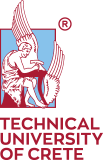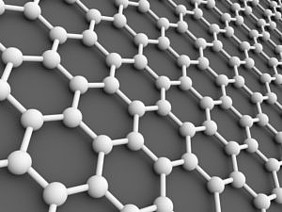Pioneering research by members of the Technical University of Crete and its associates are included in the Research Outreach e-publications, underlining the importance and the impact on international level.
Professor Costas Balas, Director of the Electronics Laboratory (School of Electrical and Computer Engineering, TUC), and his research group, are experts in improving and developing hyperspectral imaging technologies for both medical and art conservation applications. As far as it concerns art conservation, hyperspectral imaging devices can be used to identify not just what chemicals are present in pigments on the surface layers of paintings, but also what lies underneath. Professor Balas’ interest in hyperspectral imaging was originally motivated by his work in the field of cancer diagnosis and biomedicine. In this field, there is a need for devices that can successfully and accurately profile and image tumors within the body as part of the diagnostic process, but there are a number of features of the technique that can be applied to a diverse range of applications, including art restoration and identification. Professor Balas and his team used this technology to study one of Doménikos Theotokópoulos’ (El Greco) masterpieces, "The Baptism of Christ". The goal of the project coordinated by the Benaki Museum was to provide technical information to art historians to allow them to date and authenticate the painting and to determine what the physical condition of the painting was to aid with conservation work. During this process, the team found a number of surprising results that only hyperspectral imaging could have unearthed, including the numerals ‘MDLXVI’, indicating the year 1566.
Read more about this research: https://researchoutreach.org/articles/stripping-paintings-of-their-secrets-with-hyperspectral-imaging/
In their recent paper, 'Nonlinear Kinetics on Lattices Based on the Kinetic Interaction Principle', Professor Giorgio Kaniadakis (Polytechnic University of Turin) and Professor Dionissios Hristopulos (School of Mineral Resources Engineering, TUC) investigate whether the Master Equations or Fokker–Planck Equations are better for understanding how atoms move between lattice points within solid materials. The Master Equations are discrete in nature by construction, but the Fokker-Planck Equations are not. The motion of particles in lattices involves discrete jumps between the lattice sites. Master equations are the mathematical tool used to describe the dynamic evolution of physical processes on lattices [and] their solutions determine the probability of finding a particle at any time at a specific lattice site. On the other hand, the Fokker–Planck Equations assume that space is continuous. However, space and time must be discretised in order to achieve a mathematical solution of these equations on electronic computers. An interesting result is that the method used to discretise the Fokker-Planck Equations has an effect on their final outcome. Professors Kaniadakis and Hristopulos used a Statistical Physics approach, which encompasses particles that behave as fermions, bosons or anyons, to tackle the problem. The main result of this research is that physical processes on crystal lattices are more correctly described by means of master equations, which take into account the lattice structure. In contrast, the discretization of the Fokker-Planck equations depends on the chosen mathematical approximation. As a result, it is possible to obtain terms that change the physics of the studied process, especially in the case of nonlinear phenomena.
Read more about this research: https://researchoutreach.org/articles/kinetic-theories-clash-mind-the-lattice-step-statistical-physics-approach-motion-atoms-within-materials/

















